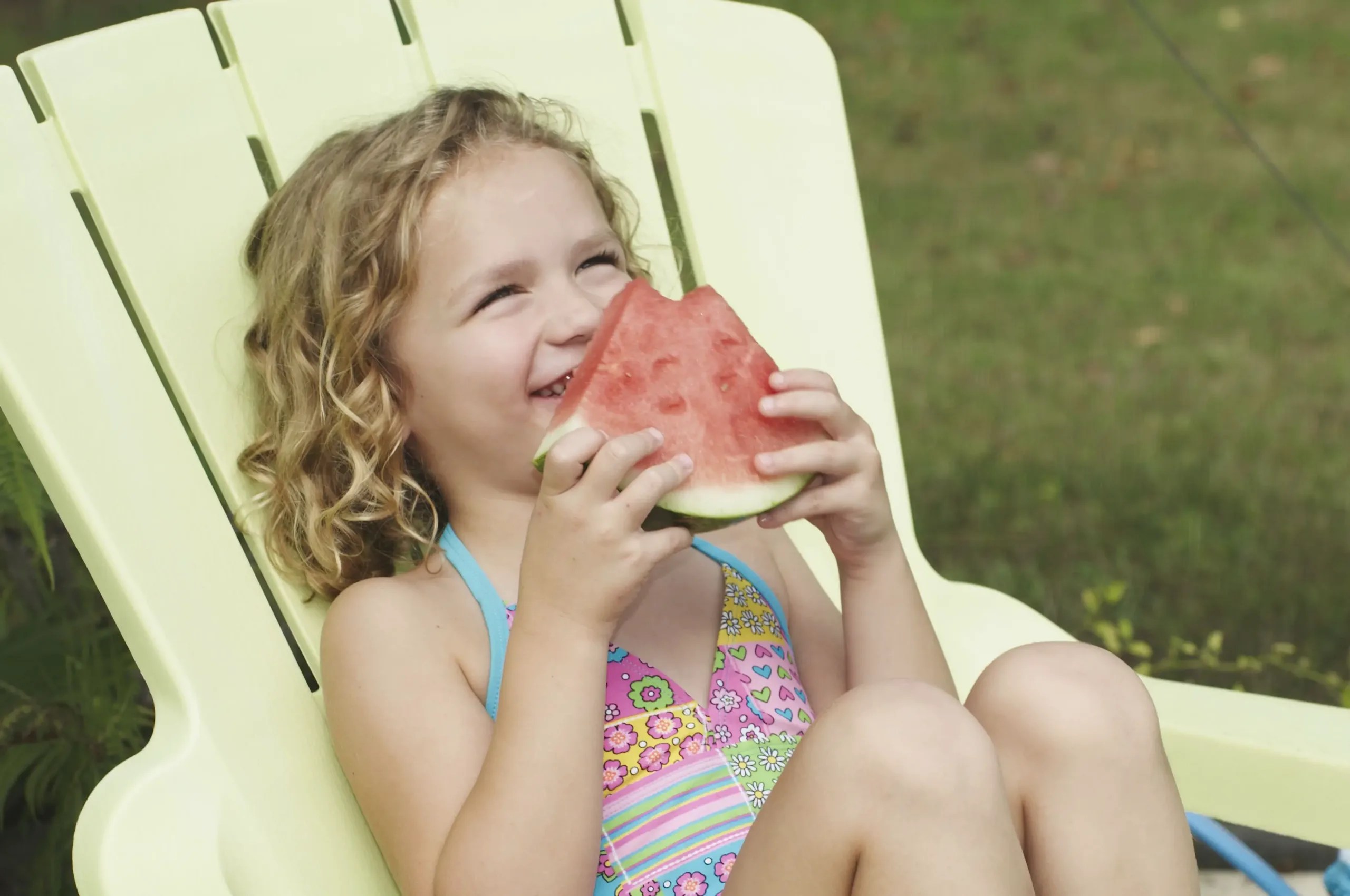
Watermelon may be a classic summer favorite for kids and parents, but choosing a perfectly sweet and juicy one from the bin-full at the local grocery can be difficult. Use the following tips to ensure your watermelon is a prime pick and then use it to make the delicious recipes at the bottom.
Ripe watermelons are heavy.
Look the watermelon over. You are looking for a firm, symmetrical watermelon that is free from bruises, cuts, or dents. Lift it up. The watermelon should be heavy for its size. Watermelon is 92% water; most of the weight is water. Turn it over. The underside of the watermelon should have a creamy yellow spot from where it sat on the ground and ripened in the sun.
Store watermelon on the warm side.
Compared to most fruits, watermelons need a more “tropical” climate – a thermometer reading of 55° F is ideal. However, whole melons will keep for 7 to 10 days at room temperature. Store them too long, and they'll lose flavor and texture. After cutting, store watermelon in refrigerator for 3-4 days.
Lower temperatures can cause chill injury.
After two days at 32° F, watermelons develop an off-flavor, become pitted, and lose color. Freezing causes rind to break down and produces a mealy, mushy texture. Once a melon is cut, it should be wrapped and stored at 36° – 39°F.
Use safe handling practices.
According to the FDA, you should wash all fruits and vegetables, including all melons, in clean, running water before eating them. This is true of all fruits and vegetables, rinds or not. You should also use clean knives and cutting surfaces. Additionally, persons preparing melons, fruits, vegetables, or other foodstuffs should thoroughly wash their hands with soap and water prior to preparing the food for eating.
Removing seeds is a breeze.
Although a majority of watermelons available are seedless, these instructions will remove seeds quickly and easily: Wash and quarter a whole melon, then cut each quarter into three or four wedges. Cut lengthwise along the seed line with a paring knife, and lift off piece. Using a fork, scrape seeds both from the removed piece and the remaining flesh on the rind. Use for cubes or continue with recipe.
Courtesy of www.watermelon.org
For the best ways to use your perfect watermelon, check out our kid- and parent-approved watermelon recipes
Also see: A Parent's Guide to Summer in the NYC Area




















